Hydrogels & Ionogels
Session Chairs
Costas Patrickios (University of Cyprus, Nikosia, Cyprus)
Felix Schacher (Friedrich Schiller University, Jena, Germany)
Invited Speakers
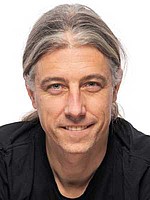
Nico Bruns (Technical University of Darmstadt, Germany)
Bio-inspired amphiphilic polymer conetworks (shared talk with Amphiphilic Gels & Networks)
Amphiphilic polymer conetworks (APCNs) already possess superior mechanical properties compared to many conventional hydrogels. Still, their strength, extensibility, and toughness can be further improved by reinforcement with peptide blocks and cellulose nanocrystals, inspired by the hierarchical reinforcement of soft materials found in nature. This, as well as the double-emulsion microfluidic preparation of APCN microcapsules, will be presented at the conference.
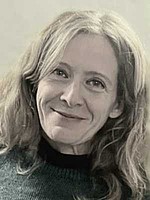
Cecile A. Dreiss (Kings College, London, United Kingdom)
Self-assembled poly(pseudo)rotaxanes based on dynamic disulfide bonds: nanostructure, mechanical properties and applications (shared talk with Dynamics, Dynamic Networks & Self-Healing)
Poly(pseudo)rotaxanes (PPR), also referred to as “molecular necklaces”, are linear polymers threaded by macrocyclic molecules, which can act as a versatile scaffold to build functional architectures. We report here the “one-pot” preparation of self-assembled thiol-rich PPR, where thiolated-α-cyclodextrins, spontaneously thread onto polymers and are then crosslinked by the thermally-triggered oxidation of thiols into disulfide bonds into a 3D network. The dynamic thiol groups along the polymer chains provide great modularity for the functionalization of thiophilic metal nanoparticles. By introducing stoppers at the polymer ends, tough hydrogels with remarkable stretchability are obtained.
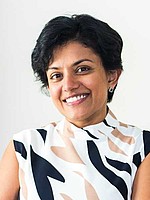
Arthi Jayaraman (University of Delaware, USA)
Combining multi-scale modeling and simulations with data-driven computational methods to understand structures in aqueous methylcellulose solutions (shared talk with Amphiphilic Gels & Networks)
This talk will highlight our recent work in the context of aggregation and gel formation in methylcellulose (MC) solutions. The goal of our research in this topic is to use computations to link MC design to assembled MC chains' structures and sol-gel phase behavior. Comparison to experiments will be provided throughout the talk.
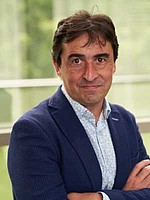
David Mecerreyes Molero (U. Basque Country, Spain)
Design of conductive eutectogels for bioelectronics (shared talk with Sensors, Actuators & Responsive Materials)
In this talk we will show our recent works in the development of new Ionic gels for bioelectronic applications. The talk will include the previous developments of gels containing ionic liquids (iongels) and our actual work in gels containing eutectic solvents, eutectogels. The additive manufacturing 3D printing of the gels will be discussed together with its applications in bioelectronic devices such as bio electrodes or organic electrochemical transistors.
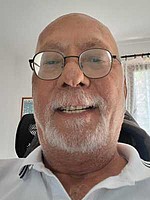
Oguz Okay (Istanbul Technical University, Republic of Türkiye)
Silk fibroin-based multiple-shape-memory organohydrogels (shared talk with Amphiphilic Gels & Networks)
In contrast to synthetic gels, their biological counterparts such as cells and tissues have synergistic biphasic components comprising both hydrophilic and lyophilic phases, which gives them some special capabilities, including adaptive biomechanics and freezing tolerance. Hydrogels containing both hydrophilic and lyophilic phases, termed organohydrogels (OHGs), are capable of mimicking biological systems, and could have great potential for various applications. Here, we present a straightforward strategy to obtain adaptive OHGs with tunable and programmable mechanics and multi-shape-memory behavior.
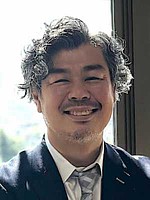
Takamasa Sakai (Univ. Tokyo, Japan)
Precision Gel Science: From Homogeneous to Heterogeneous Gels (shared talk with Elasticity and Fracture of Gels, Elastomers & Composites)
This talk introduces our efforts in establishing “Precision Gel Science” by fabricating structurally homogeneous polymer networks (TetraPEG gels) that allow direct, quantitative links between microscopic architecture and macroscopic properties. We highlight a universal scaling law for osmotic pressure as a tool to characterize network inhomogeneity, providing a new foundation for rational gel design across materials and applications.
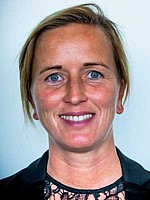
Sandra Van Vlierberghe (University of Ghent, Belgium)
Harnessing Light-Curable Chemistry for Superior 3D-printing of Hydrogels Serving Regenerative Medicine (shared talk with Bio-Medical Applications)
This talk explores the development of photo-crosslinkable gelatin-based versus polyethylene glycol (PEG) hydrogels to tune mechanical properties and print fidelity for biomedical applications. We compare step-growth and chain-growth polymerization mechanisms highlighting differences in network structure, kinetics, and cytocompatibility. Additionally, the performance of these hydrogels is evaluated in both light-based and extrusion-based 3D (bio)printing platforms to identify optimal crosslinking strategies for each modality.
Contributed talks and posters
... will be continuously added until the abstract acceptance deadline.